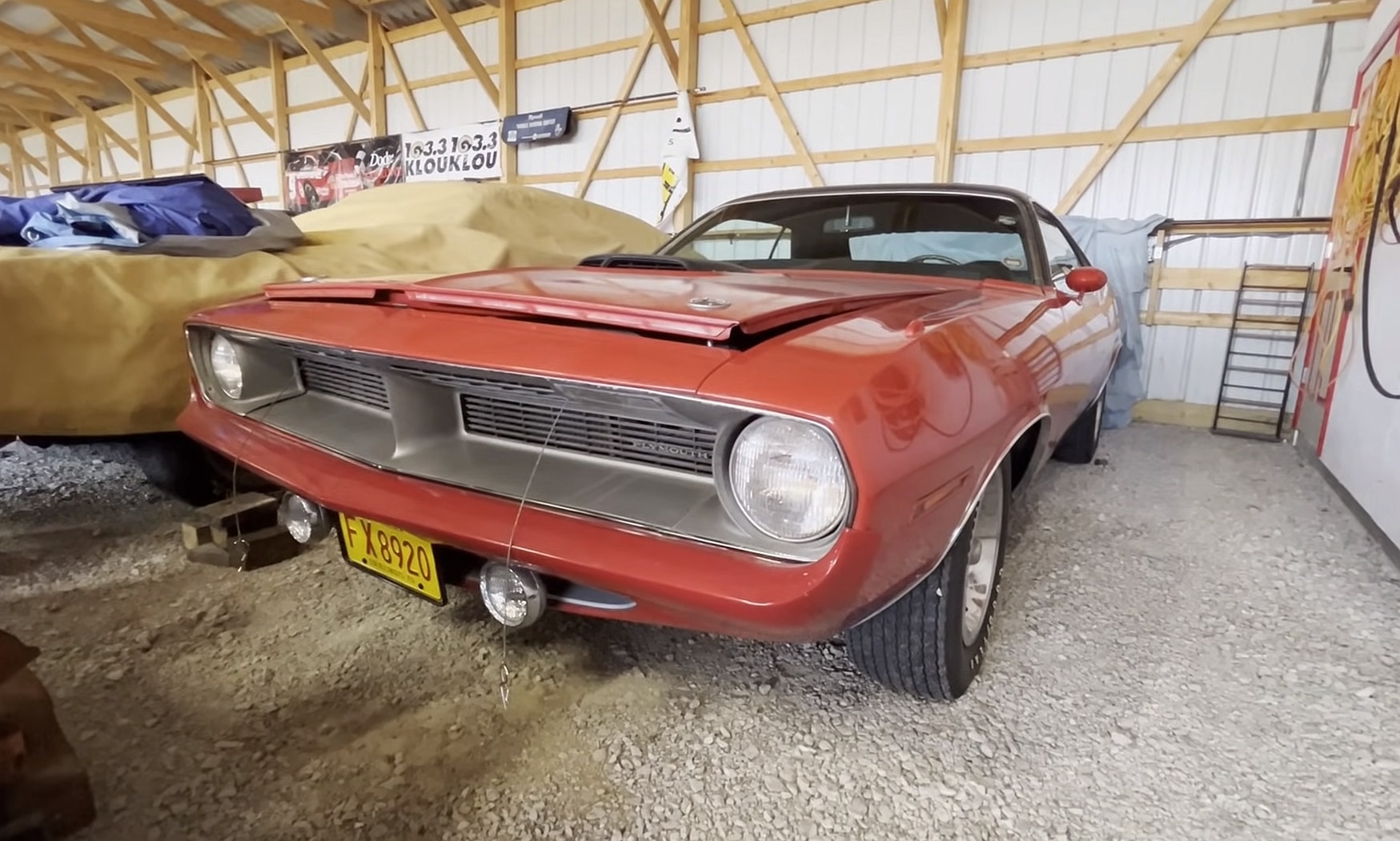Every true car enthusiast appreciates a good sleeper car. While bold designs and loud engines have their appeal, there’s something special about a modest-looking car that can outperform flashier, more obvious choices.
In the 1980s, as the American market shifted with new regulations and growing competition from foreign brands, sleeper cars started popping up in unexpected places. These hidden gems blended into the background but had the power to surprise both friends and rivals on the road. Here are 10 of the most iconic sleeper cars of the ’80s that could turn heads with their performance, even if they didn’t look the part.
9) 1980 Oldsmobile Cutlass Calais 442
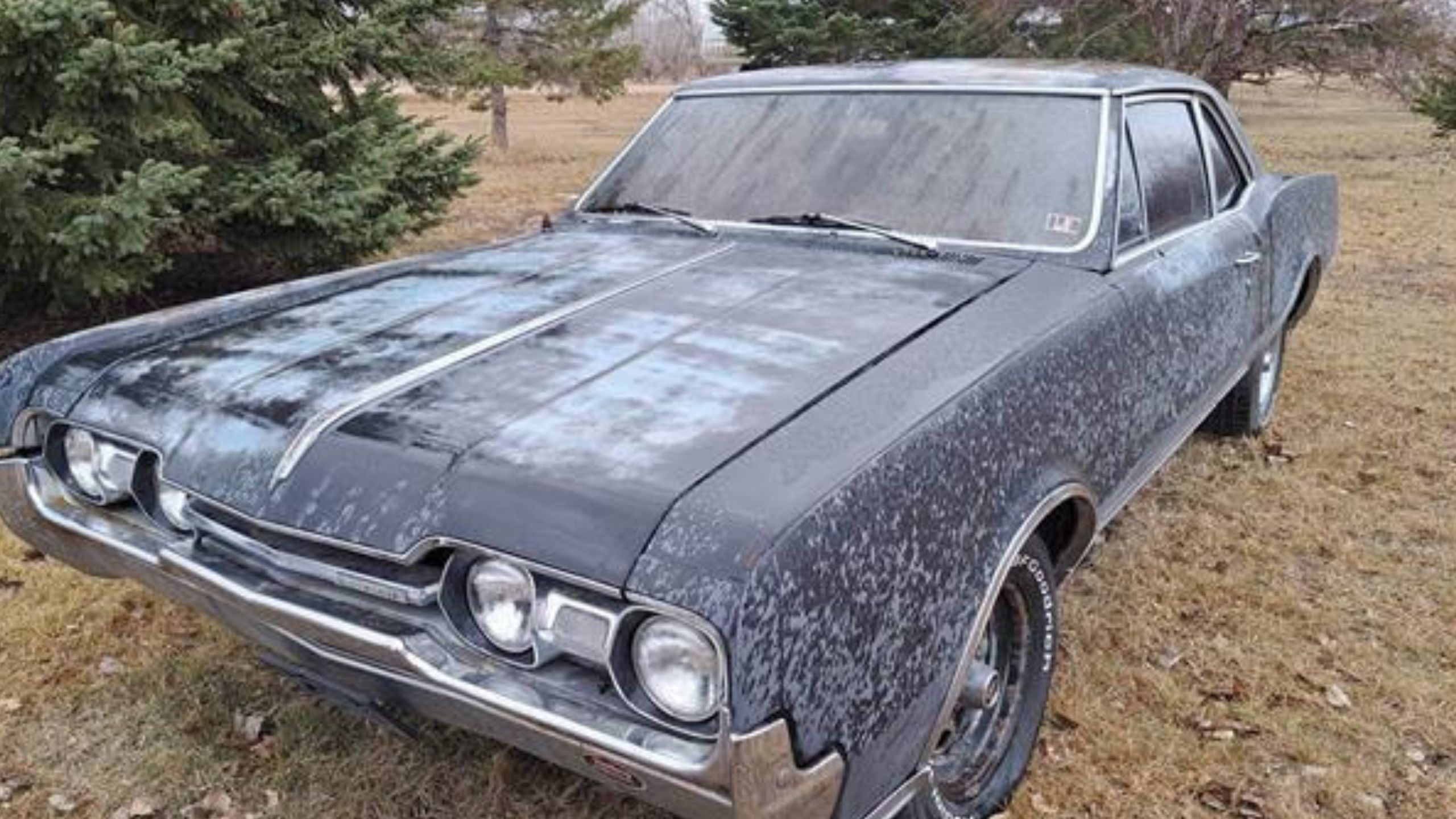
The original Oldsmobile Cutlass was far from a sleeper. At its peak in 1965, the 442 packed a powerful 400ci Rocket V8 that cranked out 345 horsepower and a massive 440 lb-ft of torque. But by 1980, the glory days had faded. The third and fourth-generation Cutlasses had become heavy steel machines with lackluster V6 engines.
That year, Oldsmobile made a bold move by introducing the Cutlass Calais trim, aiming to revive the brand’s performance reputation. Equipped with a 350ci V8, the Calais 442 offered a nod to the powerful Cutlasses of the past.
With the W-30 performance package, which included fiberglass components and other enhancements, the 1980 Calais 442 managed to produce a solid 170 horsepower and an impressive 245 lb-ft of torque. In a limited run of just 886 units, Oldsmobile briefly reminded the world that their cars could still pack a punch.
The Oldsmobile Cutlass Calais 442 holds a significant place in American automotive history, evolving from its origins as a performance package for the Cutlass into a notable muscle car during the 1960s and 1970s. The name 442 originally represented its performance features—“4-barrel carburetor, 4-speed manual transmission, and dual exhausts.” Over time, the meaning evolved, and by the 1970s, it became synonymous with engine displacement and powertrain. As the muscle car era faded, the 442 adapted to meet new challenges in the automotive world.
In the mid-1980s, Oldsmobile introduced the Cutlass Calais 442, representing a shift in focus from raw power to more practical performance. The muscle car craze had diminished due to rising fuel costs and stricter emissions regulations. The Cutlass Calais itself was a compact car built on the N-body platform, aimed at consumers seeking a smaller, sportier vehicle. While it was not as aggressive as its muscle-bound predecessors, the Cutlass Calais 442 maintained an unmistakable air of performance.
The exterior design of the Cutlass Calais 442 showcased a sleek, aerodynamic body that combined modern styling with subtle nods to its performance roots. It featured quad headlights, a modest grille, and clean lines, with the signature 442 decal displayed prominently, evoking nostalgia for earlier models. The silhouette was practical yet sporty, with a trunk spoiler and modest body details giving it a contemporary yet powerful appearance. While smaller in stature than its predecessors, the design maintained the Oldsmobile essence of blending performance with everyday utility.
Under the hood, the Cutlass Calais 442 was powered by the advanced Quad 4 engine, a 2.3-liter inline-four that was ahead of its time. With **four valves per cylinder and a double overhead camshaft (DOHC) setup, the Quad 4 was able to produce an impressive 160 horsepower and 150 lb-ft of torque. While these numbers were modest compared to the classic V8 engines of earlier 442 models, they were highly respectable for the mid-1980s, especially given the compact nature of the car and its lighter weight.
The Quad 4 engine was paired with a 5-speed manual transmission, allowing drivers to make the most of the available power. Despite the shift from rear-wheel drive to front-wheel drive, the Cutlass Calais 442 handled well, offering nimble cornering and responsiveness that was uncommon in American cars of the time. The car’s smaller size and better weight distribution enhanced its handling capabilities, making it an enjoyable ride on both winding roads and city streets. It may not have had the sheer power of its muscle car predecessors, but it delivered a thrilling driving experience.
Inside, the Cutlass Calais 442 offered a blend of sporty features and comfort. The interior was designed with driver engagement in mind, featuring **sporty instrument clusters, a tachometer, and various performance gauges. The seats provided excellent support during spirited driving, while the materials used throughout the cabin were durable and practical. In addition to its performance-oriented design, the car offered several modern conveniences, such as power windows, air conditioning, and a premium sound system, making it a comfortable vehicle for daily use.
Although it was a compact car, the **Cutlass Calais 442** was far from a bare-bones performance machine. Oldsmobile ensured that it had enough creature comforts to appeal to a broader range of buyers, making it suitable for both performance enthusiasts and those looking for a practical daily driver. The balance between sportiness and comfort gave it an edge over other compact cars in its class, and it provided enough versatility to make it a popular choice among younger drivers and loyal Oldsmobile fans alike.
The Cutlass Calais 442 may not have achieved the same legendary status as the high-powered 442 models of the past, but it played an essential role in Oldsmobile’s lineup during the 1980s. It represented the brand’s attempt to keep the performance spirit alive during a time of significant change in the automotive world. The transition to smaller, more fuel-efficient vehicles was necessary, and the Cutlass Calais 442 demonstrated that performance could still be achieved in a more compact and efficient package.
The Quad 4 engine was a breakthrough for General Motors, proving that four-cylinder engines could deliver impressive power without sacrificing efficiency. This engine would go on to power various other models in GM’s lineup, further cementing its importance in automotive history. For Oldsmobile, the introduction of the Quad 4 signaled a commitment to innovation and performance, even in the face of changing market demands and regulatory challenges. The 442 name was successfully adapted for a new generation.
The Oldsmobile Cutlass Calais 442 stands as a symbol of adaptation and evolution. While it lacked the raw power and muscle car aesthetics of its predecessors, it retained the 442’s legacy of performance. For car enthusiasts and Oldsmobile fans, it serves as a reminder of how the brand was the rapidly changing automotive of 1980s. Its compact size, innovative engine, and balance of comfort and sportiness make it a noteworthy vehicle in Oldsmobile’s storied history.
The Oldsmobile Cutlass Calais 442 occupies a unique place in the pantheon of American performance cars. It is a testament to Oldsmobile’s ability to evolve with the times while maintaining a connection to its high-performance heritage. Though it may not carry the same iconic status as its 1960s and 1970s counterparts, the Cutlass Calais 442 was an important model that helped keep the spirit of Oldsmobile performance alive during a transitional period for the automotive industry.
8) 1985 TVR Tasmin 280i 1167 Units
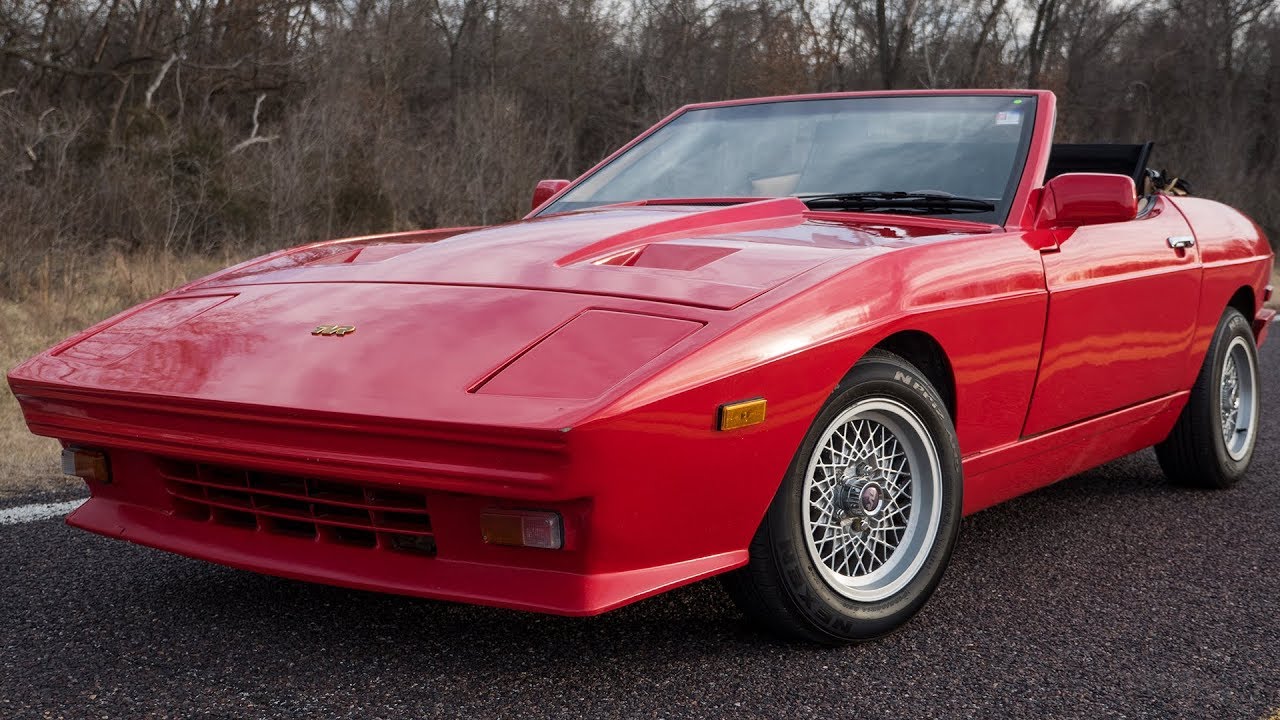
With its design borrowing elements from sleek sports cars and hot hatches, a casual observer might expect the TVR Tasmin 280i to offer performance similar to that of a 1985 VW Golf GTI or the first-generation Mazda MX-5.
However, the 280i, powered by a Ford Cologne 2.8L V6, easily outclassed both, delivering an additional 40 horsepower and 50 pound-feet of torque. Producing 160 hp and 150 lb-ft of torque, it was comparable to the 1989 Lotus Elan—yet priced $8,000 cheaper. Despite its impressive specs, mainstream options like the Golf and Miata dominated the market, leaving little room for quirky models like the TVR. As a result, only 1,167 units were produced between 1983 and 1987.
The TVR Tasmin 280i is a notable part of British automotive history, representing TVR’s foray into modern sports car design in the early 1980s. TVR, a company known for its handcrafted, high-performance sports cars, sought to rebrand and modernize its lineup with the Tasmin series, which marked a significant departure from the curvier, more traditional models of the 1970s. The Tasmin 280i was introduced in 1980 and became one of the defining models of TVR’s evolution, helping the brand through tough economic times while maintaining its identity as a builder of quirky, yet performance-driven cars.
The Tasmin 280i was the first in a new line of TVR cars that embraced a more angular, wedge-shaped design language, a hallmark of many performance cars of the 1980s.
This departure from the curvy lines of TVR’s previous models was a bold move, signaling the brand’s intent to align itself with the futuristic design trends of the time. The Tasmin 280i’s sharp, angular bodywork was the work of Oliver Winterbottom, a designer with a background at Lotus, who brought with him the influence of wedge design seen in other British cars of the era.
Underneath its striking exterior, the Tasmin 280i was built on a lightweight tubular steel frame, a traditional feature of TVR cars, which contributed to the car’s nimble handling and impressive power-to-weight ratio.
The body was made from fiberglass, another staple of TVR’s construction techniques, helping to keep the car’s weight low. This lightweight design, combined with the car’s well-tuned suspension, made it a driver’s car through and through. It handled sharply, with quick responses that made it fun to drive on twisty roads, though the stiff ride quality wasn’t for everyone.
Powering the Tasmin 280i was a 2.8-liter Ford Cologne V6 engine, a reliable and well-regarded powerplant sourced from Ford’s European division. The V6 produced 160 horsepower, which, while not class-leading by the standards of the time, was more than adequate for a car as light as the Tasmin.
This engine gave the car a 0-60 mph time of around 8.2 seconds, which placed it in the ballpark of other sports cars of the early 1980s. The engine was mated to either a 5-speed manual transmission or a 3-speed automatic, though the manual was the more popular option for enthusiasts who valued the car’s sporty nature.
One of the defining characteristics of the Tasmin 280i was its simplicity and rawness as a sports car. Unlike many of its competitors, which were increasingly being fitted with power steering, anti-lock brakes, and other driver aids, the Tasmin was a purist’s car.
It relied on the driver’s skill and feel rather than technology, which made it a more engaging, if demanding, car to drive. The steering, for example, was unassisted, giving the driver direct feedback from the road but also requiring more effort, especially at lower speeds.
The interior of the Tasmin 280i was a blend of luxury and function, typical of TVR’s approach to sports cars. While the interior materials weren’t as refined as those found in more expensive luxury sports cars, it was well-appointed for its time.
Leather upholstery, a clear instrument cluster, and a driver-focused cockpit design gave the Tasmin a sense of occasion. However, being a hand-built car, the fit and finish were sometimes inconsistent, with owners occasionally encountering minor build quality issues typical of low-volume British sports cars.
Despite its sporty appeal, the Tasmin 280i wasn’t without its challenges. The wedge-shaped design, while striking, was polarizing for many buyers, and TVR’s reputation for mechanical idiosyncrasies made some potential owners cautious.
The car’s lack of modern driver aids, while appealing to purists, meant it wasn’t as accessible or comfortable for those who wanted an easier driving experience. Additionally, TVR’s small production numbers and relative obscurity outside the UK meant that finding parts and service could be a challenge, especially in international markets.
In terms of variants, the Tasmin 280i was available in both convertible and coupe body styles. The convertible was particularly popular, offering open-air motoring combined with the car’s lightweight, nimble handling. The coupe, while less common, provided a slightly more rigid structure, which some enthusiasts preferred for its sharper handling. Both versions, however, maintained the same engine and drivetrain, meaning the performance was largely identical between the two body styles.
The TVR Tasmin 280i was part of a broader range of Tasmin models, which also included the 200i and 350i, featuring different engine options. However, the 280i was the most well-known of the group, thanks to its combination of the Ford V6 engine and its accessible performance. It played a key role in keeping TVR afloat during a period when the company was struggling financially, and it helped lay the foundation for the more powerful and successful TVR models that followed in the late 1980s and 1990s.
In terms of legacy, the Tasmin 280i is remembered as a transitional car for TVR. It wasn’t as raw and brutal as some of the later TVR models, like the Griffith or Cerbera, but it helped the brand survive through difficult times while introducing new design elements and engineering concepts that would become key to TVR’s identity in the following decades. For enthusiasts, the Tasmin 280i represents a blend of old-school, hand-built British sports car charm with a dash of modernity that made it a unique and exciting vehicle to own and drive.
The TVR Tasmin 280i may not have been the fastest or most luxurious sports car of its era, but it was undeniably charismatic. Its sharp design, lightweight construction, and engaging driving dynamics appealed to a niche market of enthusiasts who valued driver involvement over outright performance or comfort. Today, the Tasmin 280i remains a classic example of TVR’s ability to build distinctive, fun-to-drive cars that have earned a loyal following among automotive enthusiasts around the world.
7) 1987 Buick Regal GNX
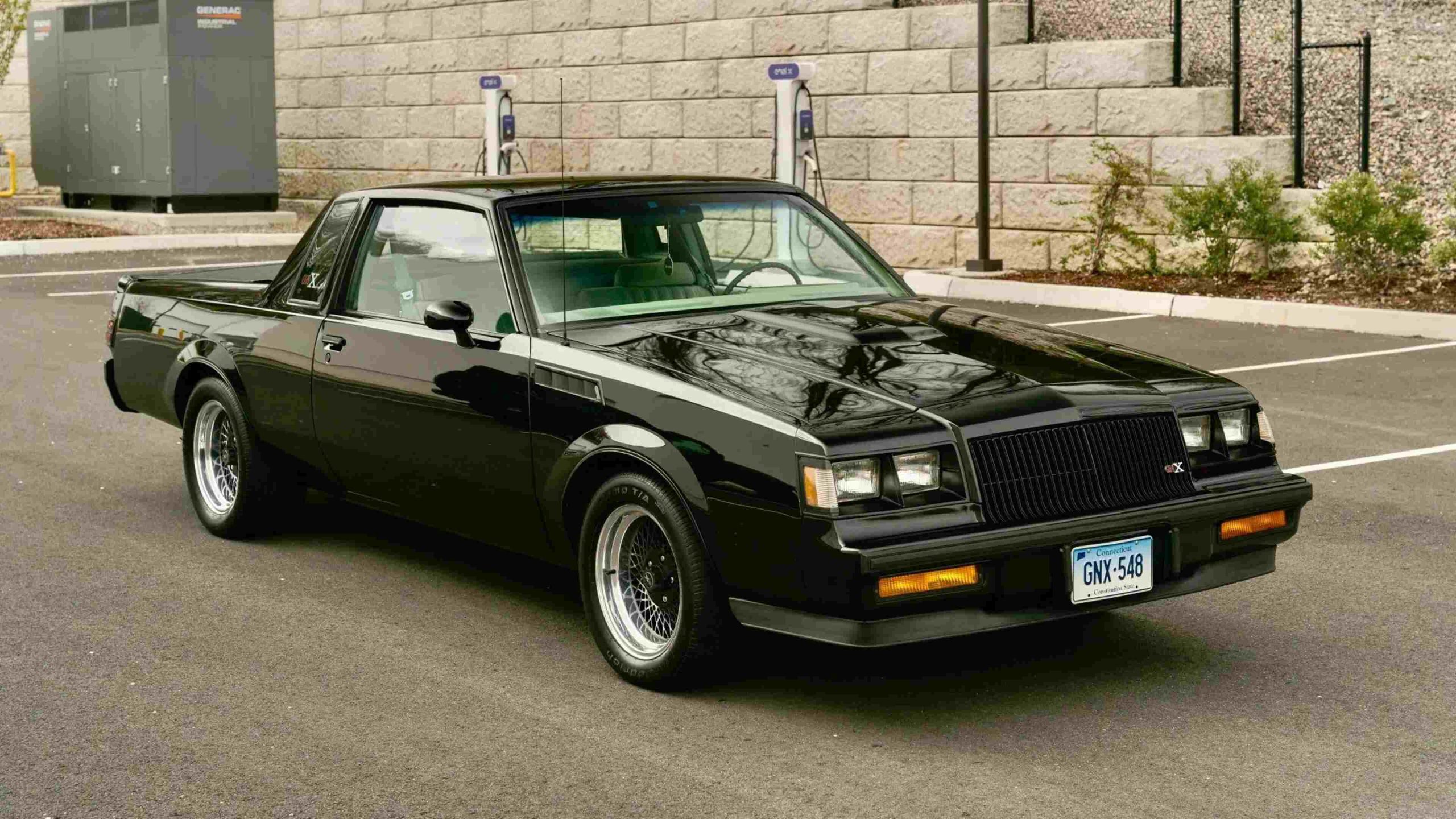
The 1980s were a rough patch for American muscle cars, but Buick, known for its unassuming power, stepped up to change the game. The Buick Regal was already a strong mid-sized performer, and its Grand National version pushed the envelope even further, surpassing many of its rivals. But Buick didn’t stop at “good enough.”
They handed a Grand National over to McLaren, who took things to another level. Instead of following the traditional muscle car route of cramming in a heavy V8, McLaren turbocharged the existing V6, refined the tuning, and stripped the car down to optimize handling.
The result was the Buick GNX, a car that delivered 276 horsepower and 360 lb-ft of torque. It easily outperformed the C4 Corvette and completely overshadowed the 1987 Mustang GT, which only managed 220 hp and 300 lb-ft of torque from its bulky 5.0-liter V8. Buick only produced 547 GNXs, making them a rare gem that commands serious attention among collectors today.
The Buick Regal GNX is one of the most legendary and revered American performance cars of the 1980s. Born out of the turbocharged legacy that Buick had been developing throughout the late 1970s and early 1980s, the GNX (Grand National Experimental) was the ultimate version of the already powerful Regal Grand National.
Produced in limited numbers for just one year in 1987, the GNX was a swan song for Buick’s turbocharged V6-powered performance cars and a direct challenge to the era’s muscle cars. It became an instant collector’s item, gaining a reputation as the ultimate sleeper car thanks to its unassuming design and staggering performance.
The GNX was essentially the pinnacle of the Regal Grand National, which itself was a performance variant of the Buick Regal. Buick had been experimenting with turbocharged engines as early as the late 1970s, and by the mid-1980s, the Grand National had become synonymous with high performance.
But the GNX was something else entirely. Buick worked in collaboration with ASC/McLaren to refine and upgrade the Grand National, transforming it into a beast of a car that could rival even the mighty Chevrolet Corvette.
At the heart of the Buick GNX was a turbocharged 3.8-liter V6 engine. While the Grand National already had an impressive version of this engine, producing around 245 horsepower, the GNX took things up several notches.
Thanks to upgrades from ASC/McLaren, including a larger Garrett T-3 turbocharger, an upgraded intercooler, and reworked internals, the GNX produced a staggering 276 horsepower and an earth-shaking 360 lb-ft of torque. These numbers might not seem outrageous by today’s standards, but in the mid-1980s, they were enough to make the GNX one of the fastest production cars in America.
Buick officially rated the GNX’s 0-60 mph time at around 4.7 seconds, but independent tests often clocked the car even faster, with quarter-mile times in the low 13-second range.
This kind of acceleration was on par with or even faster than the contemporary Chevrolet Corvette, making the GNX a serious contender in the muscle car world. The V6 engine’s turbocharged nature meant that it produced an incredible amount of torque, making the GNX brutally quick off the line, with its automatic transmission delivering power to the rear wheels in a smooth but forceful manner.
In addition to its raw power, the GNX came with significant suspension and handling upgrades. Buick fitted the car with a unique ladder bar rear suspension, designed to improve traction and control under hard acceleration.
Special shocks and bushings were added, and the car sat lower than the standard Regal, giving it a more aggressive stance. Larger tires and 16-inch black mesh wheels helped the GNX keep its considerable power in check. While it wasn’t exactly a track car in terms of handling, the GNX was stable and well-composed for a straight-line performance machine, and it could still hold its own in the corners compared to other muscle cars of the era.
One of the most remarkable aspects of the Buick GNX was its understated, almost stealthy appearance. Buick was known for making comfortable, conservative cars throughout much of the 1970s and 1980s, and the GNX was no different in this regard.
While it featured some subtle upgrades over the standard Grand National, such as wider fender flares, blacked-out trim, and unique GNX badging, it largely retained the boxy, unassuming shape of the Regal. It didn’t scream “high-performance” like a Corvette or a Mustang, and this stealthy, sleeper appearance only added to the car’s appeal. The GNX was a wolf in sheep’s clothing, capable of embarrassing far more expensive and exotic machinery on the drag strip.
Inside, the GNX was fairly spartan compared to other performance cars of its time. The interior was based largely on the standard Regal, with simple but comfortable seating and a rather plain dashboard layout. However, Buick did include some performance-focused touches, like a Stewart-Warner gauge package, which included a prominent boost gauge, reminding drivers of the turbocharged power under the hood.
The GNX came with a standard automatic transmission, a 4-speed Turbo-Hydramatic 200-4R, which was heavily reinforced to handle the engine’s massive torque output. Despite the focus on performance, the GNX remained a comfortable car to drive on a daily basis, with power windows, air conditioning, and other creature comforts that made it more livable than many other muscle cars.
Production of the Buick GNX was extremely limited, with only 547 units built in total. This exclusivity, combined with its blistering performance, ensured that the GNX became an instant collector’s item.
When new, the GNX had a sticker price of around $29,000, which was significantly more expensive than the regular Grand National. However, given its rarity and performance, many buyers saw it as a worthy investment, and today, well-preserved examples of the GNX can fetch over six figures at auction, with some even crossing the $200,000 mark.
The GNX is often regarded as one of the last great muscle cars of the original muscle car era. While the 1980s were not known for producing powerful American cars due to stringent emissions regulations, the GNX stood as a shining exception, proving that even in a time of downsizing and fuel efficiency, American automakers could still build cars with serious performance. It was also a testament to Buick’s engineering prowess and ability to innovate, as the GNX was a technological marvel for its time, particularly with its turbocharged V6 engine.
The Buick Regal GNX is a car that has earned its place in automotive history as one of the most formidable performance machines of the 1980s. Its combination of stealthy looks, turbocharged power, and limited production has made it a highly sought-after collector’s item, and its performance figures still impress even today.
For car enthusiasts, the GNX represents the pinnacle of Buick’s performance legacy and a time when the brand pushed the boundaries of what a muscle car could be, leaving a lasting impact on the automotive world.
6) 1983 Ford Mustang GT Turbo

The 1980s were far from the Mustang’s golden era. The performance took a serious hit, and Ford’s attempt to compensate with flashy, era-specific styling couldn’t mask the fact that the once-iconic pony car had lost its edge. The result? A Mustang that looked bold on the outside but was far from the powerhouse it used to be.
For gearheads in the ’80s, this decline in performance was a letdown, but for modern-day enthusiasts looking for a good deal on a classic, it’s a different story. In 1983, Ford built over 120,000 Mustangs, but only 556 of them were the GT Turbo variant.
The GT Turbo had its strengths. With a turbocharged 2.3L inline-four engine producing 145 horsepower and 185 lb-ft of torque, it offered decent performance for the time. However, it simply wasn’t the Mustang that fans had grown to love over the years, and as a result, the top-performance model struggled to attract buyers.
5) 1986 Dodge Omni GLHS Turbo
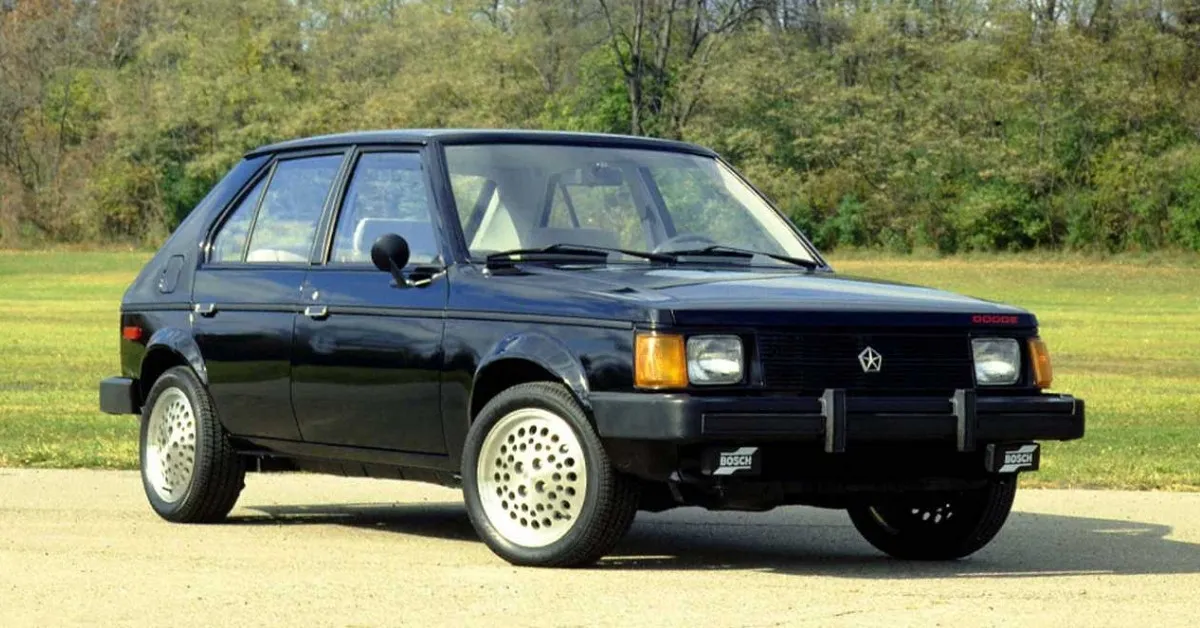
Resembling an Americanized VW Rabbit, the Dodge Omni carried the torch for American muscle during a time when many muscle car legends were fading. Enter Carroll Shelby, the automotive icon, who took the rather plain Dodge Omni compact and transformed it into something that packed a serious punch, fitting right into the over-the-top style of the ’80s.
The result? A beefed-up compact car that boasted 175 horsepower, easily outshining larger competitors in its class. Shelby produced just 500 units of the Dodge Omni GLHS (which stands for “Goes Like Hell S’more”)—a car that could leave even a Ferrari 308 or Shelby’s own iconic 1965 GT350 trailing behind at the starting line.
The Dodge Omni GLHS Turbo, introduced in 1986, is one of the most iconic vehicles to emerge from the collaboration between Carroll Shelby and Chrysler. The “GLHS” stands for “Goes Like Hell S’more,” a tongue-in-cheek reference to its predecessor, the Dodge Omni GLH, which itself was a play on words meaning “Goes Like Hell.” With the GLHS, Shelby took the already respectable Omni GLH and gave it a high-performance upgrade, making it a true sleeper car that could take on much more expensive and prestigious rivals of the time.
At the heart of the Dodge Omni GLHS is its turbocharged 2.2-liter inline-four engine, which was significantly upgraded by Shelby. The engine produced an impressive 175 horsepower and 175 lb-ft of torque, making it one of the most powerful front-wheel-drive cars of its era.
This powertrain was mated to a close-ratio 5-speed manual transmission, ensuring that drivers could fully exploit the engine’s potential. The turbocharger, combined with an intercooler, allowed the GLHS to achieve 0-60 mph times of around 6.5 seconds, which was remarkable for a compact car in the mid-1980s.
The GLHS’s exterior may have appeared unassuming, but it was purposefully designed to be a sleeper. Its boxy, hatchback body style resembled the everyday economy cars of the time, but subtle cues hinted at its performance credentials.
Shelby added a few unique touches, such as blacked-out trim, a distinctive “GLHS” badge, and a Shelby logo on the front grille. The car sat on lightweight aluminum wheels wrapped in high-performance Goodyear Eagle tires, which provided the grip needed for the car’s turbocharged power.
Underneath the unassuming bodywork, the Dodge Omni GLHS Turbo featured a suspension system that was tuned for performance driving. Shelby’s team upgraded the springs, shocks, and anti-roll bars, resulting in a car that could handle corners with precision and confidence. The car’s lightweight design, weighing in at just over 2,500 pounds, made it nimble and agile on the road. The GLHS was not just a straight-line performer; it could also carve through twisty roads with ease, out-handling many of its rivals.
Inside, the Dodge Omni GLHS was similarly straightforward but functional. The interior featured sport bucket seats, a leather-wrapped steering wheel, and a special instrument cluster with a boost gauge to monitor the turbocharger’s performance. While the interior was not luxurious by any means, it provided all the necessary tools for a spirited driving experience. Shelby’s focus was clearly on performance, and the interior reflected that ethos, with minimal distractions for the driver.
One of the most notable aspects of the Dodge Omni GLHS Turbo was its affordability. Priced at around $11,000 when new, the GLHS offered performance that rivaled cars costing two or three times as much. This made it a favorite among enthusiasts who wanted a fast, fun car without breaking the bank. The GLHS was also relatively easy to modify, and many owners took advantage of its turbocharged engine to push its performance even further.
Despite its impressive performance credentials, the Dodge Omni GLHS Turbo was produced in limited numbers, with only 500 units built. This exclusivity, combined with its connection to Carroll Shelby, has made the GLHS a sought-after collector’s car today. Finding a well-preserved GLHS can be a challenge, but for those who do, it’s a rewarding experience. The car’s blend of turbocharged power, sharp handling, and everyday practicality makes it a unique offering in classic performance cars.
The Dodge Omni GLHS Turbo also marked an important chapter in Shelby’s legacy. After his success with high-performance Mustangs in the 1960s, Shelby’s partnership with Chrysler in the 1980s allowed him to apply his performance tuning expertise to a new generation of cars. The GLHS, along with other Shelby-modified Dodge vehicles like the Shelby Charger and Shelby Dakota, helped cement his reputation as a master of turning ordinary cars into extraordinary performers.
In terms of driving experience, the Dodge Omni GLHS Turbo offers a raw, visceral feel that is increasingly rare in modern cars. The turbocharged engine delivers a surge of power when the boost kicks in, and the close-ratio manual transmission ensures that the driver is always engaged in the driving process. The lack of electronic aids, such as traction control or stability control, means that driving the GLHS requires skill and focus, making it a rewarding experience for enthusiasts who appreciate a more analog driving experience.
Today, the Dodge Omni GLHS Turbo is remembered as one of the best “hot hatches” of its time. While it may not have the same level of recognition as some of its European counterparts, such as the Volkswagen GTI or the Renault 5 Turbo, the GLHS has earned a loyal following among enthusiasts who appreciate its unique combination of performance, affordability, and understated styling.
It remains a testament to the ingenuity of Carroll Shelby and Chrysler, and its legacy lives on in the hearts of those who experienced its exhilarating performance firsthand.
The Dodge Omni GLHS Turbo is a car that defies expectations. What appears at first glance to be a humble economy hatchback is, in reality, a high-performance machine that can hold its own against far more prestigious rivals. Its turbocharged engine, lightweight design, and Shelby-tuned suspension make it a joy to drive, and its affordability and rarity have only increased its appeal over time. For those lucky enough to get behind the wheel of a GLHS, it’s an unforgettable experience that continues to resonate with enthusiasts decades after its release.
4)1989 Dodge Caravan Turbo

For fans of sleeper cars, there’s a common dream: pulling up to a red light next to someone in a flashy, overpriced vehicle, only to leave them in the dust with something completely unexpected. Few cars fit that scenario better than the Dodge Caravan Turbo. After all, there’s nothing quite like the humiliation of being outpaced by a minivan.
Don’t get too attached to that image, though. Exact numbers are hard to pin down, but estimates from Jalopnik and Bring a Trailer suggest there may only be around 400 of these Caravans, along with their Plymouth Voyager Turbo counterparts, still in existence.
The story behind their creation is both amusing and unexpected. Minivans, particularly the Dodge Caravan and Plymouth Voyager, were so popular in the late ‘80s that Chrysler ran out of the standard 98-hp four-cylinder engines they were meant to have. With customer demand high and parts running low, Chrysler decided to drop a turbocharged 2.5-liter four-cylinder engine from Mitsubishi into these family haulers.
However, the result didn’t exactly win hearts. Most minivan buyers weren’t looking for high performance, and the turbo engine didn’t mesh well with the rest of the design. It had turbo lag, and the 150 horsepower it produced felt like an odd middle ground—too much power for a school run, but not quite enough to dominate the drag strip.
The Dodge Caravan Turbo, introduced in the late 1980s, is a fascinating yet often overlooked vehicle that embodies the unique approach Chrysler took to the minivan market.
At a time when practicality and family hauling were the primary concerns for most minivan buyers, Dodge decided to inject some excitement into the segment by offering a turbocharged version of their popular Caravan. This decision reflected the company’s willingness to experiment and cater to a niche group of buyers who wanted more performance without sacrificing the utility of a minivan.
At the core of the Dodge Caravan Turbo was its turbocharged 2.5-liter inline-four engine. This engine produced 150 horsepower and 180 lb-ft of torque, a significant upgrade over the standard naturally aspirated engines available in the Caravan at the time.
While these numbers may not seem particularly high by today’s standards, they were impressive for a minivan in the 1980s. The turbocharged engine provided the Caravan with noticeably quicker acceleration, especially in highway merging and passing situations, making it one of the most powerful minivans of its era.
The turbocharged engine was mated to either a 3-speed automatic transmission or a 5-speed manual transmission, which was an unusual option for a minivan. The manual transmission, in particular, added to the uniqueness of the Dodge Caravan Turbo, as very few minivans have ever been offered with a manual gearbox. For drivers who preferred more control over their vehicle’s performance, the manual transmission allowed for a more engaging driving experience, which was quite rare in the minivan segment.
In terms of exterior design, the Dodge Caravan Turbo looked largely the same as its non-turbo counterparts. It featured the same boxy, utilitarian shape that made the Caravan a popular choice for families and those needing a practical vehicle.
However, Dodge added a few subtle touches to differentiate the Turbo model, such as “Turbo” badging and, in some cases, upgraded wheels. These small changes hinted at the performance lurking beneath the otherwise ordinary minivan exterior, but the Caravan Turbo maintained a largely understated appearance, making it something of a sleeper in the automotive world.
On the road, the Dodge Caravan Turbo offered a driving experience that was notably different from other minivans of the time. The turbocharged engine provided a strong surge of power when the boost kicked in, especially in the mid-range RPMs where the torque was most pronounced. This made the Caravan Turbo feel surprisingly quick in day-to-day driving, particularly when the driver needed to accelerate quickly onto the highway or overtake slower vehicles. While it wasn’t a sports car by any means, the added performance made the Caravan Turbo a more enjoyable and versatile vehicle.
The Caravan Turbo’s suspension was largely unchanged from the standard model, meaning it still prioritized comfort and practicality over outright performance. However, the ride quality was generally smooth, and the vehicle’s relatively low curb weight for a minivan meant that it handled reasonably well for its size.
The front-wheel-drive layout provided adequate grip, although the turbocharged power could occasionally overwhelm the tires during hard acceleration, resulting in some torque steer. Nevertheless, the Caravan Turbo was a competent and comfortable vehicle for long-distance travel, with the added benefit of extra power when needed.
Inside, the Dodge Caravan Turbo was spacious and practical, just like the standard Caravan. It offered seating for up to seven passengers, with flexible seating arrangements that allowed for easy reconfiguration to accommodate cargo. The interior design was simple but functional, with durable materials that were well-suited to the rigors of family use. While the interior did not feature many luxury touches, it provided everything a family would need for road trips, school runs, or daily errands.
The Caravan Turbo also came equipped with a range of features that were advanced for the time, such as air conditioning, power windows, and a cassette player. Optional features included a rear wiper, tilt steering, and upgraded audio systems, allowing buyers to customize their minivan to suit their preferences. However, it’s clear that performance was the main selling point of the Caravan Turbo, as many of the other features were shared with the standard models.
One of the most intriguing aspects of the Dodge Caravan Turbo was its market position. While minivans were usually linked to practicality and family-focused features, the Caravan Turbo appealed to a niche group of buyers seeking a touch of excitement in their family vehicle. This made it a standout option, as few other manufacturers were experimenting with performance-oriented minivans at the time. It also highlighted Dodge’s readiness to break the mold and deliver something truly distinctive compared to its competitors.
Despite its relatively niche appeal, the Dodge Caravan Turbo has developed a small but devoted following among automotive enthusiasts and collectors. Its combination of practicality and turbocharged performance makes it a rare and interesting vehicle, particularly in today’s world, where the idea of a turbocharged minivan seems almost inconceivable.
Finding a well-preserved Caravan Turbo can be a challenge, as many of these vehicles were used as everyday family transport and have since faded into obscurity. However, for those who appreciate the unusual and are willing to search, the Caravan Turbo offers a unique driving experience that stands out in the history of the minivan.
The Dodge Caravan Turbo is a testament to Chrysler’s innovative spirit in the 1980s. By taking a practical, family-oriented vehicle and adding a turbocharged engine, Dodge created a minivan that defied expectations and brought a sense of fun to the segment.
While it may not have been a huge sales success, the Caravan Turbo remains an interesting and memorable vehicle for those who appreciate automotive oddities and the thrill of turbocharged power. Its legacy lives on as a reminder that even the most utilitarian vehicles can be transformed into something special with the right combination of performance and practicality.
3)1986 Zimmer Quicksilver
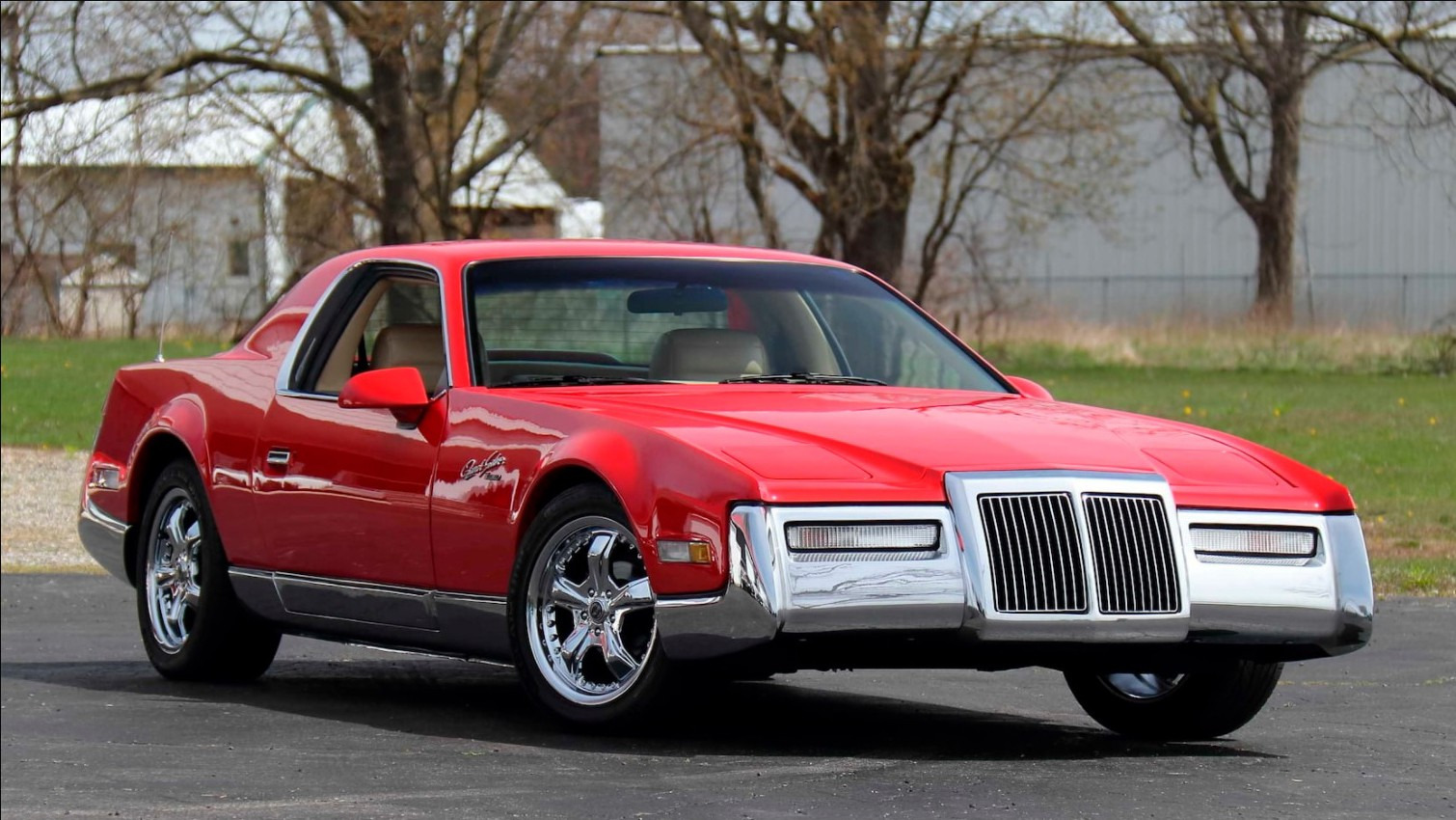
Zimmer was an odd entity in the automotive world. It wasn’t quite a full-fledged car manufacturer but more than just a coachbuilder. The company specialized in creatively reimagining performance cars, taking their mechanical components and crafting entirely new vehicles around them, often with a nostalgic nod to classic car design.
Zimmer produced only two models before going under, but both—the Golden Spirit and the Quicksilver—remain among the most unusual sleepers ever sold. The Golden Spirit was inspired by prewar luxury cars like the original Rolls-Royce Phantom, built on a Mustang chassis. The Quicksilver, on the other hand, took the underpinnings of a Pontiac Fiero and dressed them up to resemble a late ‘60s Buick or Oldsmobile cruiser, courtesy of former GM designer D.A. Johnson.
The result was highly divisive. Some have gone as far as calling the Quicksilver one of the ugliest cars of the 1980s. Despite its looks, it delivered the performance of a sports car while appearing more like a GM-style luxury yacht suited for retirement. Only 170 were ever made, according to Hagerty, making it a rare and eccentric part of automotive history.
The Zimmer Quicksilver is one of the most unique and striking vehicles to emerge from the 1980s, a time when automotive design was often characterized by experimentation and bold choices.
Produced by Zimmer Motorcars Corporation between 1984 and 1988, the Quicksilver was a luxury coupe with a design that evoked the spirit of the 1930s and ’40s, while being based on the modern mechanicals of the Pontiac Fiero. Zimmer, a company known for its neoclassic vehicles, aimed to combine classic styling with contemporary performance and technology, and the Quicksilver was a standout example of this philosophy.
At the heart of the Zimmer Quicksilver was its mid-engine layout, inherited from the Pontiac Fiero. It was powered by a 2.8-liter V6 engine, which produced 140 horsepower and 170 lb-ft of torque.
While these numbers were modest by high-performance car standards, they were adequate for the Quicksilver’s intended purpose as a grand touring vehicle. The engine was paired with either a 3-speed automatic transmission or a 5-speed manual transmission, providing a smooth and relaxed driving experience. The mid-engine design contributed to the car’s balanced handling, giving it a level of agility that belied its stately appearance.
The Zimmer Quicksilver’s most defining feature was its dramatic exterior design. The car’s long, sweeping lines, wide body, and low profile made it stand out from anything else on the road at the time.
The Quicksilver’s front end was dominated by a chrome grille that harkened back to the classic luxury cars of the pre-war era, while the quad rectangular headlamps gave it a modern twist. The sharply angled windshield and sloping roofline contributed to the car’s aerodynamic profile, and the wide rear haunches added to its imposing stance. The Quicksilver’s distinctive look was further accentuated by its chrome-trimmed fenders, which extended over the rear wheels in a throwback to classic designs.
The Quicksilver’s body was constructed using fiberglass panels, a material chosen for its light weight and ease of molding into complex shapes. The use of fiberglass also allowed Zimmer to create a car with highly distinctive styling without the prohibitive costs associated with traditional metal bodywork.
Despite its retro-inspired design, the Zimmer Quicksilver was a thoroughly modern car under the skin, with features like power steering, disc brakes, and independent suspension, all of which contributed to its comfortable and capable ride.
Inside, the Zimmer Quicksilver offered a luxurious cabin designed to pamper its occupants. The interior was upholstered in leather, with plush seats that provided excellent comfort for long-distance cruising.
The dashboard was simple but elegant, with wood trim accents and analog gauges that gave the Quicksilver an upscale feel. Power windows, air conditioning, and a premium sound system were all standard features, reflecting the car’s status as a luxury vehicle. The interior was spacious for a two-seater, thanks to the Quicksilver’s wide body and mid-engine layout, which freed up space in the cabin for both passengers and luggage.
The Zimmer Quicksilver was positioned as an exclusive, low-volume luxury car, with a price tag of around $50,000 when new. This was a significant amount of money in the 1980s, especially considering that the Pontiac Fiero, on which it was based, was a much more affordable car.
However, the Quicksilver was aimed at a niche market of buyers who valued its unique styling, exclusivity, and the sense of occasion that came with driving such a distinctive car. Zimmer produced the Quicksilver in very limited numbers, with fewer than 200 units built during its production run, making it a rare and collectible vehicle today.
Despite its eye-catching design and luxurious features, the Zimmer Quicksilver faced several challenges in the marketplace. The car’s performance, while adequate for a grand tourer, was not on par with other high-end luxury and sports cars of the time. Additionally, the high price tag made it difficult for Quicksilver to compete with more established luxury brands.
As a result, the car had limited commercial success, and production ended after just a few years. However, the Quicksilver has since gained a cult following among collectors and enthusiasts who appreciate its unique blend of classic styling and modern technology.
Driving the Zimmer Quicksilver is an experience unlike any other. The car’s long hood, wide body, and low seating position give it a commanding presence on the road, and the view out over the chrome grille evokes the feeling of driving a classic luxury car from a bygone era.
The V6 engine provides the smooth, effortless acceleration, and the car’s handling is surprisingly nimble for its size, thanks to its mid-engine layout and relatively lightweight. While the Quicksilver was never intended to be a high-performance sports car, it excels as a grand tourer, offering a comfortable and relaxing driving experience.
Today, the Zimmer Quicksilver is a rare and sought-after collector’s item. Its unique design, combined with its limited production numbers, makes it a prized possession for those who appreciate classic car styling with a modern twist. Finding a well-preserved Quicksilver can be a challenge, but for collectors who do, it represents a unique piece of automotive history. The car’s blend of neoclassical design and contemporary technology makes it a standout in luxury vehicles, and its rarity ensures that it will always be a conversation piece at car shows and gatherings.
The Zimmer Quicksilver is a fascinating car that embodies the bold design ethos of the 1980s while paying homage to the luxury cars of the past. Its unique blend of classic styling, modern technology, and luxurious features makes it a truly one-of-a-kind vehicle.
While it may not have achieved mainstream success during its production run, the Quicksilver has since become a highly collectible car that continues to capture the imagination of enthusiasts and collectors alike. For those lucky enough to own one, the Zimmer Quicksilver offers a driving experience that is both nostalgic and forward-thinking, a true testament to Zimmer’s vision of automotive luxury.
2)1986 Mercedes-Benz AMG Hammer
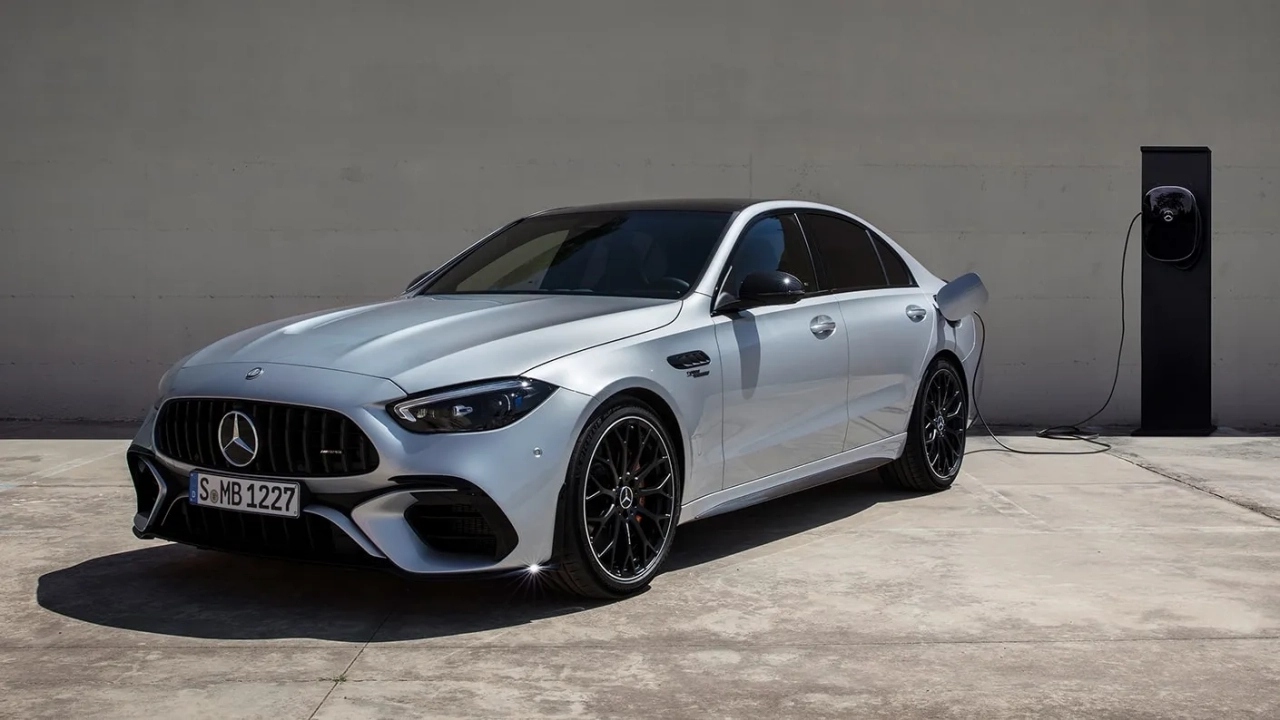
AMG-tuned Mercedes sedans have long been the epitome of sleeper cars. Mercedes has a reputation for crafting vehicles that balance daily practicality with high-speed thrills on the Autobahn, while AMG takes that foundation and transforms it into something extraordinary. The AMG Hammer stands as one of the most extreme examples of what AMG can do, a true icon in the brand’s performance history.
Though it looked nearly identical to the unassuming W124 sedan, the Hammer packed a serious punch. With 355 horsepower and a 0-60 time of just 5 seconds, it was more than capable of outrunning even a Lamborghini Countach. The name “Hammer” was cleverly chosen, as it resonates in both English and German. Despite its impressive specs, the AMG Hammer remains one of the rarest sleepers, with estimates suggesting only 54 units were ever produced.
The Mercedes-Benz AMG Hammer is a legendary vehicle that exemplifies the pinnacle of performance and luxury from the German automaker. Introduced in the late 1980s, the Hammer represented a unique collaboration between Mercedes-Benz and its tuning division, AMG, which specialized in enhancing the performance of Mercedes vehicles.
The Hammer was based on the W124 chassis and was notable for being one of the most powerful sedans of its time, marking a significant shift in the perception of what a luxury sedan could achieve in terms of speed and performance.
At the heart of the AMG Hammer was a powerful 5.0-liter V8 engine, which produced an astonishing 354 horsepower and 384 lb-ft of torque. This engine was capable of propelling the Hammer from 0 to 60 mph in just under six seconds, an impressive feat for a sedan of its size and weight.
The Hammer’s engine was mated to a 4-speed automatic transmission, which provided smooth and responsive shifts. The power and performance of the Hammer were further enhanced by AMG’s modifications to the engine, which included upgraded camshafts, a high-performance exhaust system, and a recalibrated engine management system, all designed to maximize the car’s potential.
The AMG Hammer’s performance was complemented by its handling capabilities. AMG engineers made several modifications to the suspension, including the installation of stiffer springs and shock absorbers, which improved the car’s cornering abilities and reduced body roll. The Hammer also featured wider tires and upgraded brakes, providing the necessary grip and stopping power to match its impressive speed. The combination of a powerful engine and well-tuned suspension made the Hammer a formidable performer on both the street and the racetrack, offering a driving experience that was both exhilarating and refined.
Visually, the Mercedes-Benz AMG Hammer retained the elegant and understated design typical of the W124 series, but it also incorporated several elements that hinted at its performance capabilities.
The car featured a more aggressive front fascia, larger air intakes, and a subtle rear spoiler, all of which contributed to its sporty appearance. Additionally, the Hammer was equipped with distinctive AMG wheels and side skirts, further distinguishing it from the standard W124 models. This understated styling was part of the Hammer’s appeal, as it allowed the car to fly under the radar while still delivering exhilarating performance.
Inside the cabin, the AMG Hammer offered a level of luxury and refinement that was synonymous with the Mercedes-Benz brand. The interior was adorned with high-quality materials, including leather upholstery and wood trim, providing an atmosphere of sophistication.
The Hammer was also equipped with a range of advanced features for its time, such as power-adjustable seats, climate control, and a premium sound system. The attention to detail and craftsmanship evident in the Hammer’s interior reflected the brand’s commitment to luxury, ensuring that drivers and passengers alike enjoyed a comfortable and enjoyable experience.
The AMG Hammer was not only a performance sedan but also a symbol of status and exclusivity. With a price tag significantly higher than the standard W124 models, the Hammer was aimed at a select clientele who valued both luxury and high-performance capabilities.
The limited production numbers of the Hammer, coupled with its outstanding performance characteristics, have contributed to its status as a collector’s item today. Enthusiasts and collectors seek out well-preserved examples of the Hammer, making it a coveted addition to any classic car collection.
One of the most remarkable aspects of the AMG Hammer was its ability to combine the characteristics of a luxury sedan with those of a high-performance sports car. The car’s performance was comparable to that of contemporary supercars, yet it retained the comfort and practicality that made it suitable for everyday use. This duality appealed to a wide range of buyers, from those looking for a luxurious daily driver to those who sought an exhilarating performance machine.
The AMG Hammer also played a pivotal role in the evolution of the AMG brand itself. It set the stage for future high-performance models from Mercedes-Benz, showcasing the potential of tuning and modifying standard production vehicles to create something extraordinary. The success of the Hammer helped establish AMG as a respected name in the automotive world, leading to further collaboration with Mercedes-Benz on a variety of performance models in the years that followed.
Today, the Mercedes-Benz AMG Hammer remains a beloved classic among car enthusiasts, representing a golden era of performance sedans. Its unique combination of luxury, performance, and understated styling continues to capture the imagination of collectors and drivers alike. The Hammer’s reputation as one of the most powerful and luxurious sedans of its time has solidified its status as a true automotive icon, and it serves as a reminder of the innovative spirit and engineering prowess that defines Mercedes-Benz and AMG.
The Mercedes-Benz AMG Hammer is a remarkable vehicle that perfectly encapsulates the blend of luxury and performance that the brand is known for. Its powerful engine, agile handling, and elegant design set it apart from other sedans of its era, making it a standout in the automotive world.
The Hammer’s legacy lives on as a testament to the potential of merging high-performance engineering with luxury, ensuring its place in automotive history as one of the most influential performance sedans ever produced. For those fortunate enough to experience it, the AMG Hammer offers a driving experience that is as thrilling as it is refined, embodying the best of both worlds.
1)1982 Ford Durango
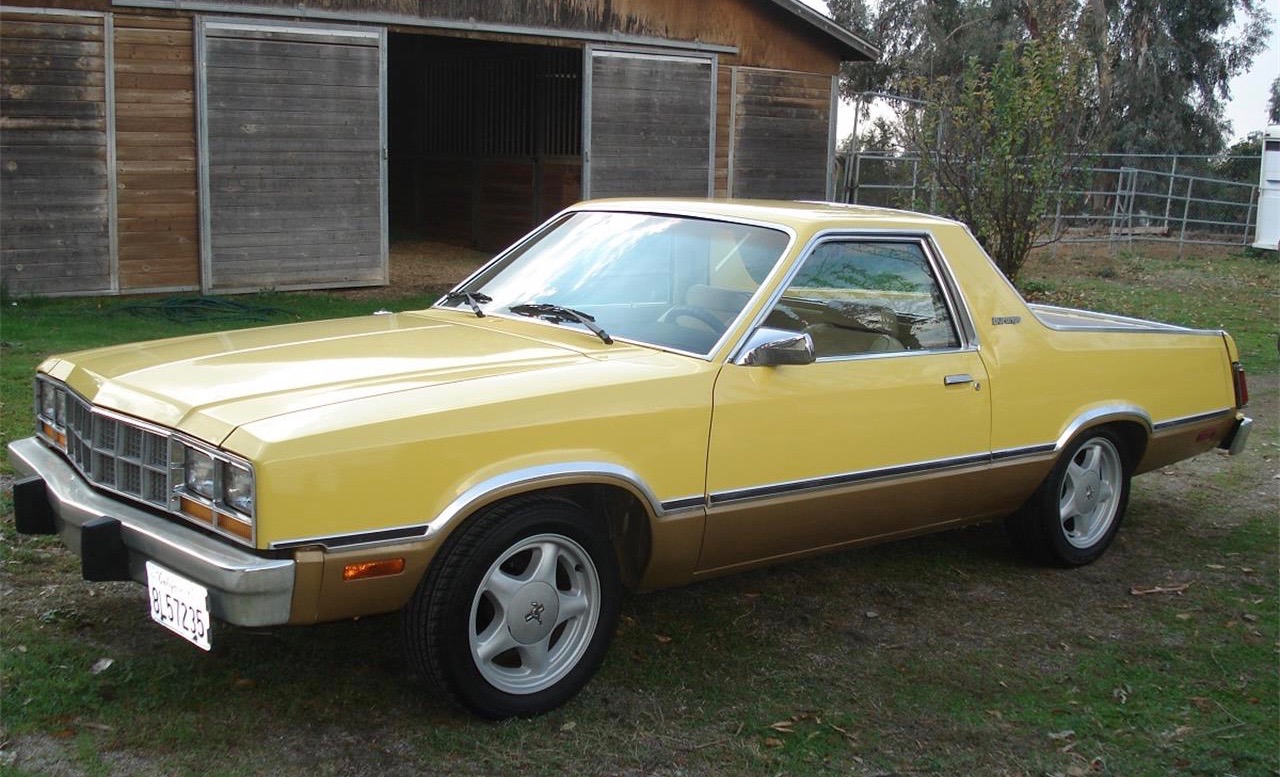
At some point during the 1980s, someone at Ford must have asked, “What if we made an El Camino with a foxbody twist?” This question likely emerged after a few drinks during a marketing meeting. After discontinuing the popular Ranchero utility vehicle in 1979, Ford considered re-entering that niche with a car-truck hybrid based on the rather unremarkable Ford Fairmont compact, available as a $2,500 option.
The Ford Durango, built by National Coach rather than Ford itself, never gained the popularity of the standard Fairmont, but it became a hidden gem among savvy Ford enthusiasts. Equipped with an optional 4.2-liter V8, it produced 115 horsepower and 195 lb-ft of torque, matching or even exceeding the performance of every Mustang from that year except for the 5.0-liter V8 version. Only around 212 units of the Durango were produced, making it a true classic sleeper.

